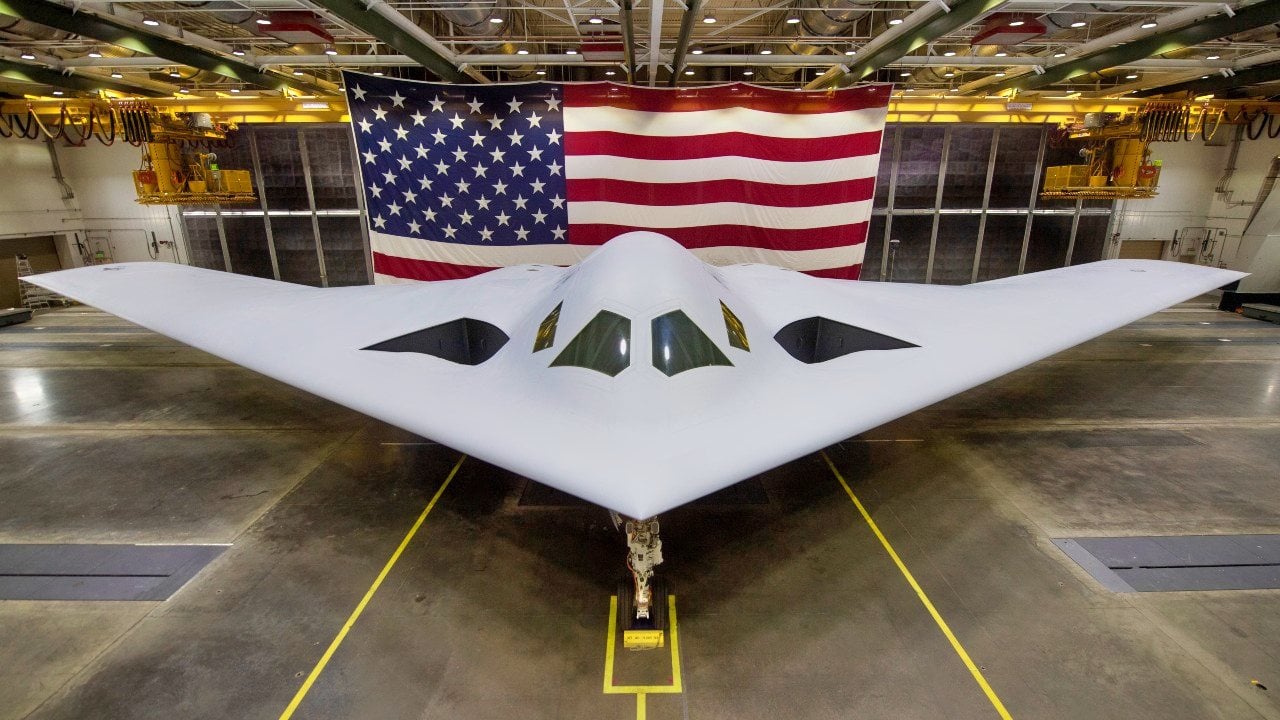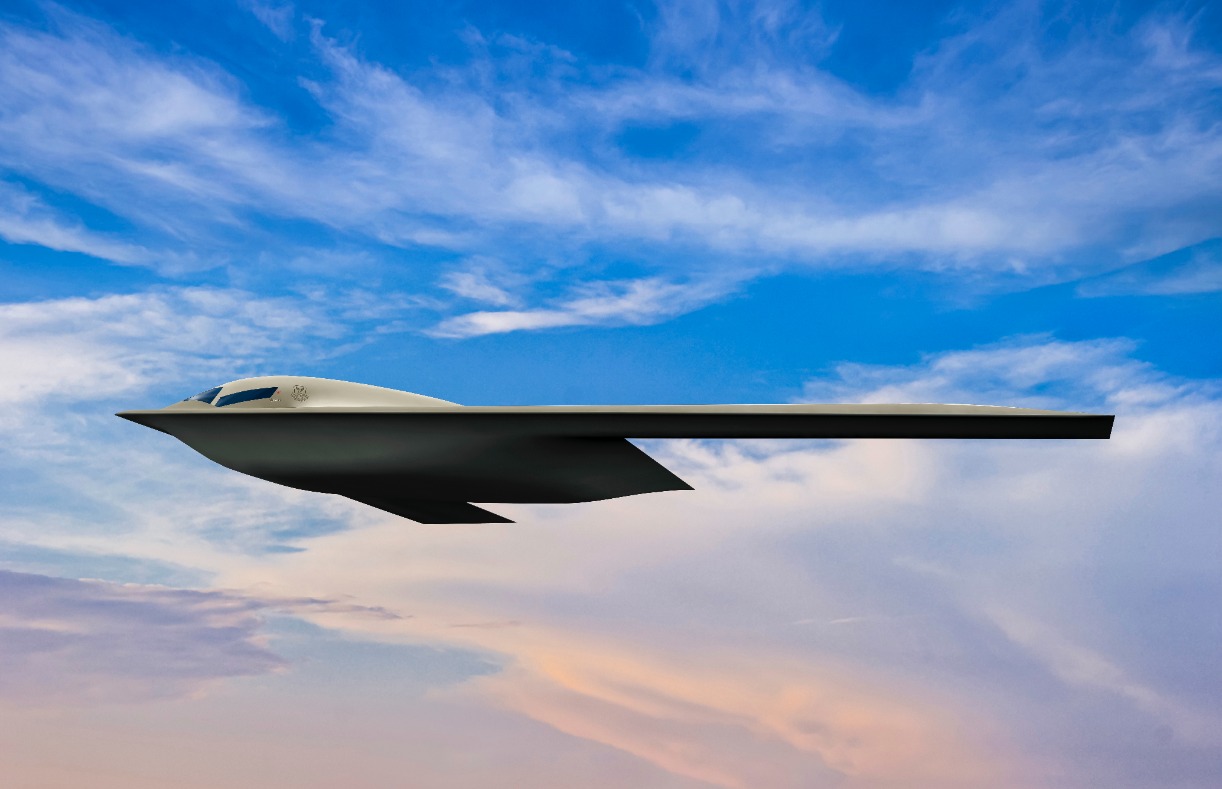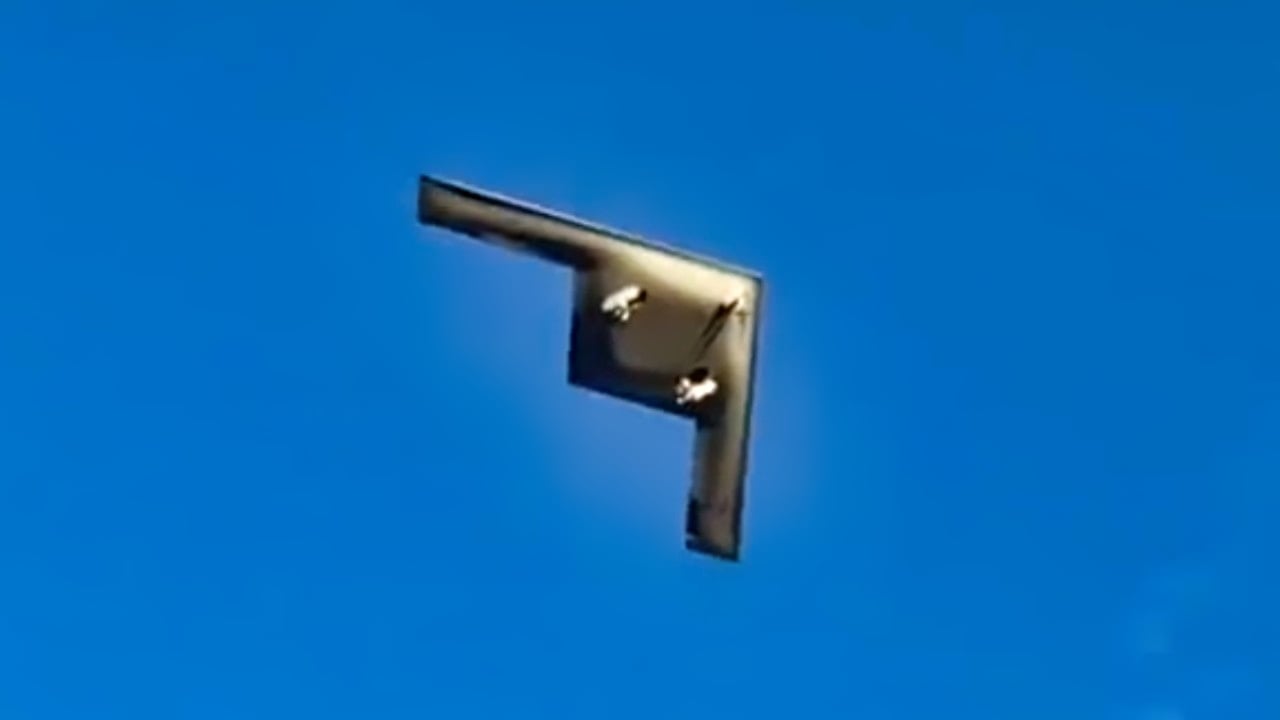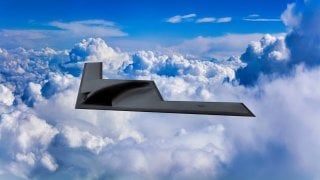The B-21 Raider Bomber Dilemma
The B-21 Raider is the U.S. Air Force's planned next-generation stealth bomber intended to replace the aging B-2 Spirit. While it features advanced radar-absorbent materials and cutting-edge stealth capabilities, the aircraft faces criticism for its high cost—potentially up to $300 million per unit—and lack of speed.
What You Need to Know: The B-21 Raider is the U.S. Air Force's planned next-generation stealth bomber intended to replace the aging B-2 Spirit. While it features advanced radar-absorbent materials and cutting-edge stealth capabilities, the aircraft faces criticism for its high cost—potentially up to $300 million per unit—and lack of speed.

-In an era where adversaries like China are developing advanced anti-stealth and anti-aircraft technologies, relying solely on stealth may not be sufficient.
-The article argues that without high speed and altitude advantages, the B-21 could become vulnerable, suggesting that investment might be better directed toward hypersonic aircraft like the proposed SR-72 "Son of Blackbird."
B-21 Raider: Is America's New Stealth Bomber Worth the Cost?
The B-21 Raider is the U.S. Air Force’s planned replacement for the aging B-2 Spirit stealth bomber. Made out of sophisticated radar-absorbent alloys and possessing some of the most advanced capabilities of any plane in the world, it is probably the most complex stealth system in the world.
There’s just one problem: It’s super expensive. Its cost and the complexity of the systems in question mean that mass-producing the B-21 will be difficult. This is one of the few massive investments that is worth the cost. Air Force designers hoped for a fleet of 300 units to make it a worthwhile endeavor, but the Air Force conceded they’d “settle” for 150 or maybe even 100.
They will, sadly, be lucky to get a dozen of these critical systems.
After all, the B-2 Spirit, America’s primary long-range stealth bomber, is a decisive strategic asset when deployed. Yet the Air Force has less than 20 of these aging systems on hand, and the service will probably have to part with these birds sooner rather than later.
It’s Not Enough to Be Stealthy
In an age where the global commons is increasingly contested by American near-peer rivals, the ability to punch through advanced anti-aircraft systems will be paramount for any primary long-range strike bomber in the United States’ arsenal.
The stealth features of the B-21 Raider are what make this bird such a remarkable plane. But there is one thing that is needed almost as much as stealth. That is speed. And this, unfortunately, is where the B-21 Raider falls short.

The proponents of this program will tell you that speed is inconsequential compared to the range and stealthiness of the plane. That was certainly the argument for the B-2 Spirit, which flew at a meager Mach 0.85 (or 652 miles per hour). One can assume that the new B-21 is likely to fly at a similar languid pace, especially when the bird is fully loaded.
Being slow is a very undesirable trait in the current threat environment of advanced, multi-layered air defenses that are better than ever at detecting stealth technology and whose reach stretches farther than before. This argument gives ammunition to the people who do not want to spend a dime of the taxpayers’ money on a plane that could cost as much as $300 million per unit.
The B-21’s stealth technology is likely better than anything on the battlefield today. And it likely will remain a significant advantage for years to come, if the Air Force ever gets its desired fleet of B-21 Raiders. The anti-aircraft systems of America’s enemies, however, are also rapidly advancing. There is a chance that those rivals will, at least for a time, create systems that could detect and shoot down the B-21.
Enemy Anti-Stealth and Anti-Aircraft Systems
In such a case, think of the opportunity cost behind the B-21. Even a fleet of 19 B-21s, at $300 million per unit, would constitute one of the Air Force’s biggest expenses in recent history. What if the Chinese create a reliable anti-stealth detection system, such as their fabled quantum radar, and marry it to advanced anti-aircraft systems like the ubiquitous Russian-built S-400, or to indigenously produced hypersonic weapons?
For a fraction of the cost of the B-21, the Chinese could render its stealth obsolete.
If the B-21 had speed at its disposal, it might still be worthwhile even in the event of a loss of stealth. But if its only attribute is that it is the world’s most advanced stealth plane, it will not be worth it at a time when America’s enemies are creating countermeasures to American stealth technology.

What’s Really Needed
Writing in these pages recently, Alexis Littlefield reminded readers that the B-21 has a “maximum ceiling of just 55,000 feet.” That’s another setback for this otherwise nifty bird. Flying too low and slow in today’s international system is just a cost-ineffective (and combat-ineffective) notion.
Flying high, fast, and stealthy – these are the ingredients of a worthwhile long-range bomber. Recent news has come out about the fabled SR-72 “son of Blackbird.” This author remains a supporter of the B-21, but the Air Force might have to choose between paying for the SR-72 or the B-21.
While even less is known about the SR-72 than about the B-21, if the Air Force has to choose between funding one or the other, the SR-72 might be the better investment.
Author Experience and Expertise: Brandon J. Weichert
Brandon J. Weichert, a National Interest national security analyst, is a former Congressional staffer and geopolitical analyst who is a contributor at The Washington Times, the Asia Times, and The-Pipeline. He is the author of Winning Space: How America Remains a Superpower, Biohacked: China’s Race to Control Life, and The Shadow War: Iran’s Quest for Supremacy. His next book, A Disaster of Our Own Making: How the West Lost Ukraine, is due October 22 from Encounter Books. Weichert can be followed via Twitter @WeTheBrandon.
All images are Creative Commons or Shutterstock. All photos are of various submarine styles.
From the Vault
Russia Freaked Out: Why the U.S. Navy 'Unretired' the Iowa-Class Battleships
Battleship vs. Battlecruiser: Iowa-Class vs. Russia's Kirov-Class (Who Wins?)


